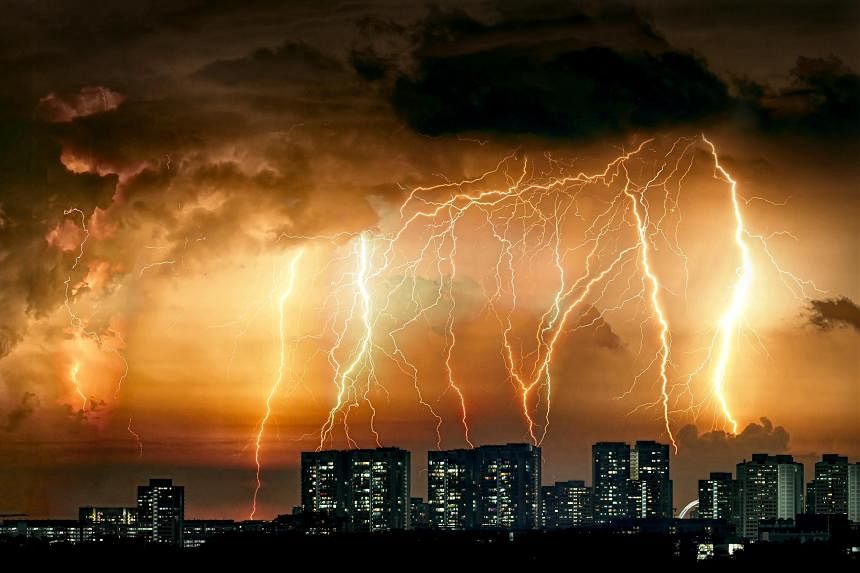SINGAPORE – Located near the equator, Singapore has become a contender for the world’s lightning capital with its many thunderstorms.
The country has one of the highest lightning rates in the world, with strikes occasionally harming people and infrastructure. On June 3, one such bolt sparked a fire that crippled a northern stretch of the North-South Line during evening peak hours.
In January, three workers on the roof of a Build-To-Order block in Bartley were taken to hospital after a bolt of lightning struck near them.
Using the latest data from the Meteorological Service Singapore (MSS), The Straits Times looks at why Singapore is a lightning magnet and whether climate change will increase the likelihood of such strikes.
Why is Singapore hit by so much lightning?
Lightning is a large electrical spark caused by the difference in charges between storm clouds and the ground, or within the clouds. It discharges in a blinding flash.
There are on average 175 days that lightning was detected in Singapore annually, based on records at the Changi Climate Station, the National Environment Agency’s MSS told ST.
This amounts to nearly one in every two days each year.
Thunderstorms that occur all year round in Singapore arise from two major rain-bearing weather systems.
First, localised thunderstorms are brought about by breeze carrying moisture from the sea inland. The moist air mixes with rising warm land air caused by the sun and, under unstable conditions, form a thunderstorm.
The second, Sumatra squalls, is a line of thunderstorms that travels towards Singapore after developing over the island of Sumatra or the Strait of Malacca.
About 20 per cent of lightning hits the ground, making these the most dangerous kind of bolts.
According to MSS’ lightning information service, 11 of such cloud-to-ground lightning strikes were detected between 5.20pm and 5.24pm, near Kranji MRT station on June 3, shortly before a bolt was reported to have damaged trackside equipment.
Even in the absence of a thunderstorm at a location, lightning from a thunderstorm cloud more than 10km away, also known as a bolt from the blue, can still strike the ground.

